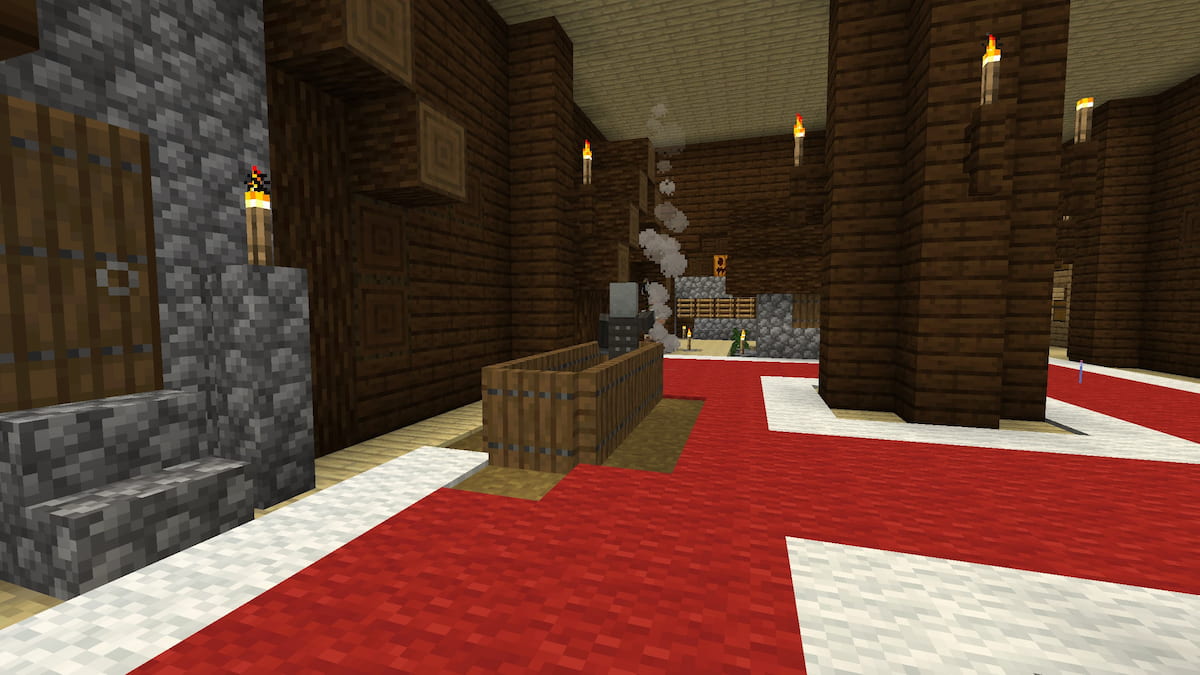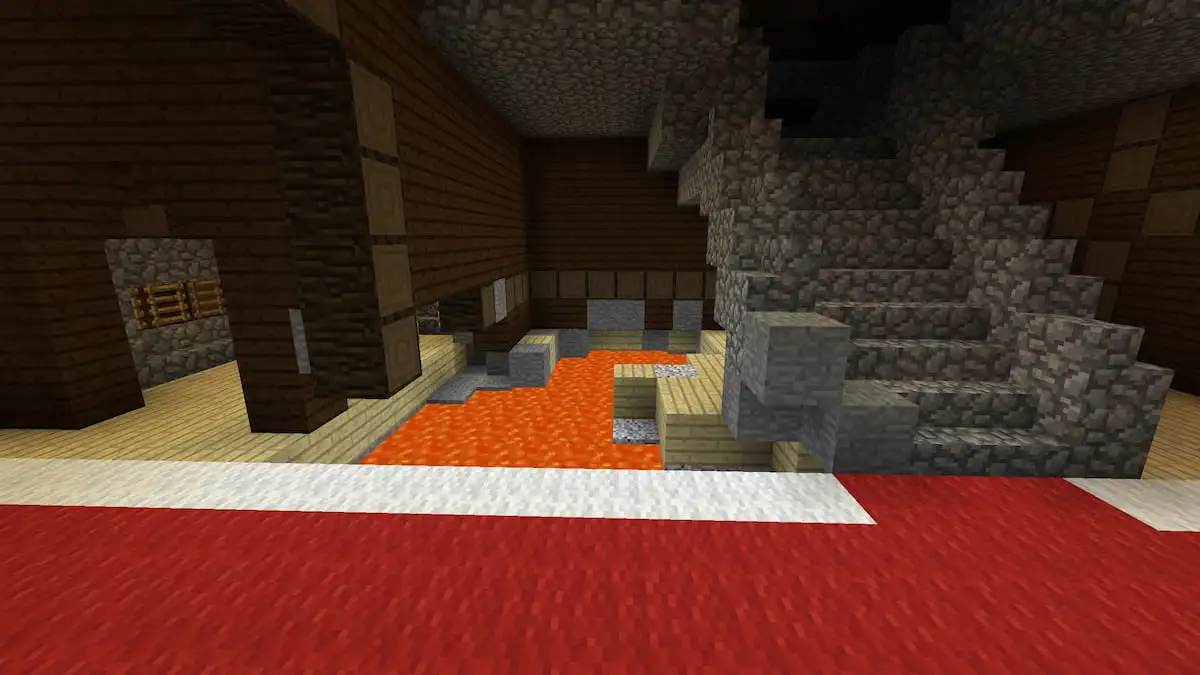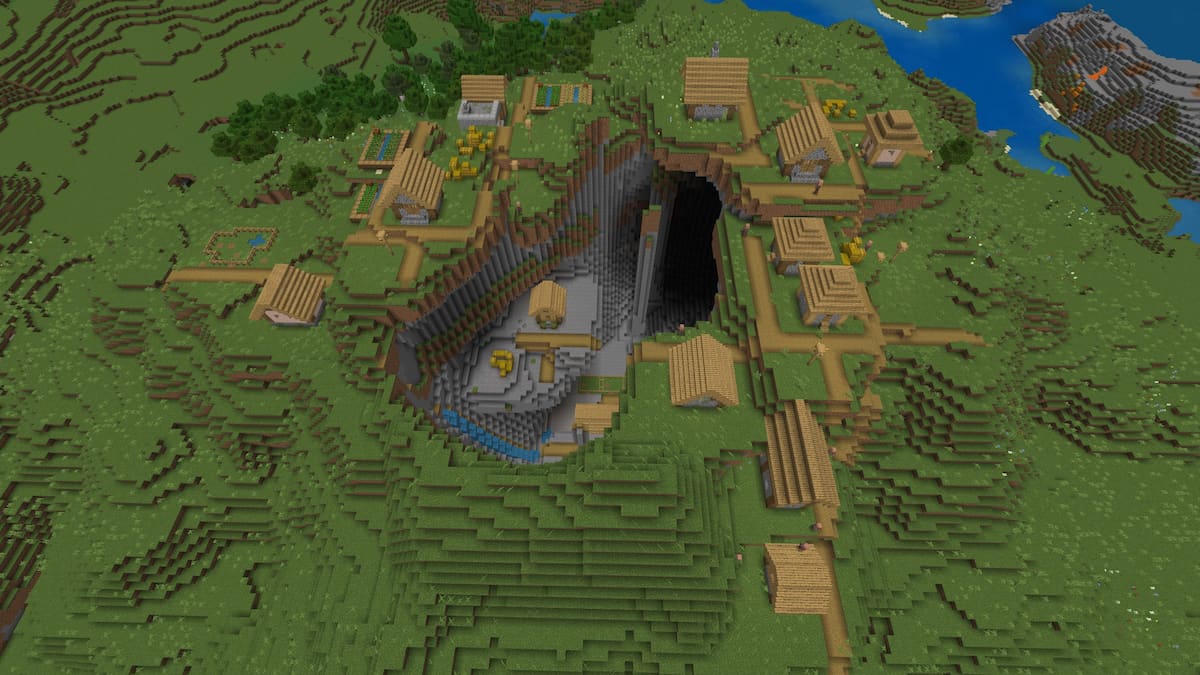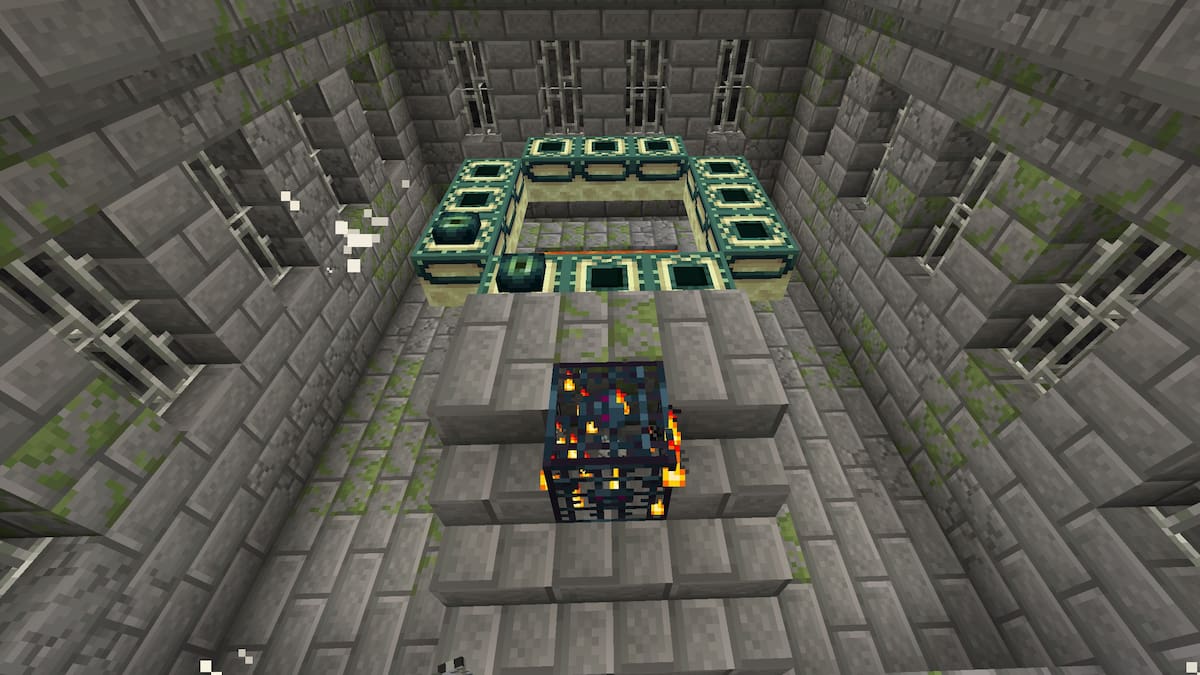It’s been over seventeen years since the last Killer Instinct game by Rare studio, and many gamers ask “was it worth the wait,” the answer you’re most likely to get is, you bet it was. Killer Instinct is 2D fighting game that emphasizes on light, medium, and heavy attacks, Linkers, and Shadow attacks. In this new version of the game, the new developers, Double Helix, also added brand-new features like customization options, titles, backgrounds, icons, taunts, and “Instinct Mode.”
The new Killer Instinct got a huge upgrade, these upgrades are level designs, character designs, graphics, netcode, in-game mechanics, new moves for the characters, sound design, a brand-new character, in-game announcer, and everyone’s favorite upgrade, Ultra combos. This new art style of Killer Instinct looks absolutely amazing, my personal favorite is the character designs, all completely modernized.
The overall new game mechanics, along with some changes to the characters, will feel similar for veterans of the series, but for new-comers, it’s going to be rather challenging. However, with some practice and patience, the game will feel a lot smoother for you. Believe it or not, the mechanics are actually quite easy to learn.
Lets get started on the basics of Killer Instinct:
The controls:
The controls will feel quite similar to Street Fighter, punches and kicks, with the strengths of lights, mediums, and heavies. In fact, most of the attack notations and button layout of the basics are almost identical to Street Fighter‘s. Because of this, Street Fighter players will pick-up on the controls easily, as for the combo system for Killer Instinct, that’s where things become little difficult.
The animations for each attack will appear differently depending if the character is standing, crouching, walking forward or backward, or jumping. Each character has at least twenty-four “Normal(s)” attacks in their arsenal, each containing a strength and weakness.
Here is the default control format:
- Light Punch(LP)= X
- Medium Punch(MP)=Y
- Heavy Punch(HP)=Right Bumper(RP)
- Light Kick(LK)=A
- Medium Kick(MK)=B
- Heavy Kick(HK)=Right Trigger(RT)
- All Three Punches(3P)=Left Bumper(LP)
- All Three Punches(3K)=Left Trigger(LT)
Note: These controls can be customized through the options under “Controls” in the main menu.
Combos:
If you played the original Killer Instinct back in the day, then you’ll know that the combos had to be done in a specific way in order to create some extensive combos. Now, with this new combo mechanic, combos are much easier to execute, especially for novice players. There is a bit of freedom/randomness within the new combo mechanics, this being that players are still limited of what they can do to start and end combos.
What this means is that combos MUST start from a “Opener,” then must go to a “Linker,” “Shadow Linker,” “Manual,” or “Auto-Double.” Here is what a typical combo looks like:
Opener > Auto-Double/Manual > Linker/Shadow Linker > Auto-Double/Manual > Ender
Note: There are a some specific exceptions for certain characters.
Openers:
Openers can be any special or Shadow attack that leaves your opponent completely vulnerable for any follow-ups. Certain attacks can bring the opponent immediately to the air or ground, while air juggles are possible, traditional combos requires the opponent to be stunned while standing.
Once you have started a combo with an Opener, you follow it with almost any attack that is available to your character. Any button that is pressed after a Opener is considered an Auto-Double, if you do another special attack, it’s called a Linker. You can also follow it with a Shadow attack, this is what is called a Shadow Linker.
Note: Openers cannot be broken by Combo Breakers.
Auto-Doubles:
Auto-Doubles are used by pressing any button after an Opener, Linker, or and Shadow attack. Within a quick succession, it’ll appear as two basic attacks. Depending on the speed of it, the strength varies, from lights, mediums, and heavies.
The quicker the Auto-Doubles are, it becomes much more difficult for the opponents to break, but they will do less damage. The slower the Auto-Doubles are, the easier it is for the opponents to break, but if succeeded, they will cause the most damage.

For most of the characters, Auto-Doubles cannot be used consecutively, you must perform a Linker or Shadow Linker in order to use another Auto-Double. Auto-Doubles can be replaced by Manuals, however, they are much harder to execute.
Note: Characters like Jago or Sabrewulf can perform more than one Auto-Double after another.
Manuals:
A Manual is one basic attack that’s used during a combo. The proper timing for this is extremely strict, which makes it essentially harder to execute. Like Auto-Doubles, Manuals can only be used after Openers, Linkers, or Shadow Linkers.
After an Opener, Linker, or any Shadow attack is performed, there will be a limited time before the combo is dropped. Within that gap of time, you can use a light or medium punch or kick, pressing it too early, will result in a Auto-Double, but doing it too late, can result with the combo dropping.
You must time the Manual perfectly if you wish to beat some of the more professional players out there. Manuals will confuse many players, especially those who are not used to them – this is what makes them such a large threat.

Manuals act like Normals, each containing a certain frame advantage. These frames determine how much effectiveness they have during the combos, safe or unsafe, so you must be careful of which ones you use. One of the great aspects of Manuals is that opponents will have less than half the time to break them compared to Auto-Doubles.
This can result into a huge mind game that your opponent must guess perfectly if they wish to break the combos. Also, depending on the frames the Manual might have, you can do up to two Manuals before having to use a Linker or Shadow Linker. This will inflict more damage towards the opponent than a Auto-Double.
Note: Frame data for each attack can be viewed in Practice mode.
Linkers:
Any special move that is performed during a combo, whether it’s a light, medium, or heavy, is called a Linker. They can be used after Openers, Auto-Doubles, Manuals, or any Shadow attack. A Linker follows the rule with lights, mediums and heavies, but instead of speed, its number of hits. Light Linkers are one hit, medium Linkers are two hits and in order to perform heavy Linkers, you must hold down any button that’s light or medium, heavies are three hits.

Heavy Linkers can easily be broken by a skilled player, for that third hit will make it obviously a perfect target for a Combo Breaker, be careful when using them.
Note: Certain heavy Linkers can result in a Ender, this will of course end the combo. Again, be careful of how you use them.
Enders:
A heavy special move that is used at any time during a combo, this will result with maximum damage and ending the combo. Not using an Ender can result in losing any potential damage you had on your opponent, it’s very important that you use these Enders.
Some Enders contain different properties, what this means is that certain Enders can launch the opponent in air for small, but quick air juggle, and others can send the opponent flying at the wall causing a “Wall Splat.” If a player gets a Wall Splat on their opponent, they can potential add more hits to the combo.
Note: Enders cannot be broken unless it’s after an Opener. Another note is that certain Shadow Linkers can also cause an Ender.
Combo Breakers:
Combo Breakers are what stop the opponent’s combo, this can only be done on the ground, not in the air. However, with the new update for the game, if the opponent ends the combo with an Ender that launches you in the air for a air juggle, if the opponent is standing and hits you in air with a Manual, then you are able to Combo Break that.
You cannot Combo Break an Opener or Ender, unless it’s a short combo that goes from Open to Ender, then you may Combo Break it, but only on the Ender. To use a Combo Breaker, you must input the punch and kick strength that corresponds with the attack the opponent is using.
For example: in the middle of the combo, if you see the opponent doing a medium Auto-Double, as it’s hitting, you must quickly press MP and MK at the same time to break it. If you see the opponent doing a medium Linker, again, you press both MP and MK. This rule also applies to lights and heavies.
Note: Doing the same Combo Breakers over and over, can make you a target for a Counter Breaker. Use them wisely.
Counter Breakers:
Counter Breakers, also known as bluffs, are used to stop the defensive player that tries to attempt a Combo Breaker during a combo. What this means is that if your opponent has a habit of breaking the same strings over and over, you can stop this by pressing both MP and MK at any point during the combo.
When this happens, the character will do a animation that looks like guard and the announcer will scream Counter Breaker. After this, the combo will reset, bringing the opponent to Lock-Out and will allow you to add more hits to your combos, which can cause some ridiculous damage.
Note: If you attempt to perform a Counter Breaker and the opponent does nothing, the combo is dropped and you left vulnerable a short period of time. Again, you must use these wisely.
Lock-Outs:
During a combo, if the defensive player attempts to Combo Breaker, but inputs the wrong command, they are put into Lock-Out for three seconds. This means that an X is placed above their head, making it so that the player can’t perform a Combo Breaker for three whole seconds.

The indicator will appear in two different colors, if the player mis-times the Combo Breaker, then it’s yellow and if the player inputs the wrong command, then it’s red. However, if the offensive player succeeds with a Counter Breaker, then the defensive player will be locked-out for four whole seconds.
Note: When the opponent is in Lock-Out, use that time to inflict as much damage as possible.
Shadow Meter, Shadow Attacks, Shadow Linkers, Shadow Breakers, and Shadow Counters:
Located at the bottom of the screen, there will appear a blue meter, this is called the Shadow meter. The meter has two bars and you need at least one full bar to perform a Shadow attack or a Shadow Counter. To full the Shadow meter, you must hit your opponent with any attack, if the attack hits, you’ll gain meter at a slow pace; but if the attack hits on block, then you gain more meter. Some Enders can give you a lot of meter, however, Shadow Linkers will not give you any meter.

To perform a Shadow attack, you will input any special move with two buttons instead of one. What this means if you were to input LP for a special move, then you would input two punch buttons to perform a Shadow attack. If use a Shadow attack during a combo, then it would be called a Shadow Linker. All Shadow attacks are five hits and each one has a different speed and property. Again, you cannot gain any meter with Shadow Linkers.
If your opponent ever hits you with a Shadow attack or Shadow Linker and you wish to break it, then you tap both MP and MK the same time, three times out of the five hits. You need to tap the both buttons as each move hits you, when this happens, your character will flash white the announcer will yell one, when you hear that do it again and you’ll hear two, after three the Shadow move will break.
Depending on the Shadow attack, each one requires precise timing in order for a Shadow Breaker to occur. If you attempt to break them and you fail, then you are automatically put into Lock-Out.
Similar to a parry, Shadow Counters are performed by pressing both MP and MK, however, you must have at least one full bar of your Shadow meter. Whether if you’re successful or not, Shadow Counters requires a bar of meter, and if successful, then your character will go into a counter-like animation and will perform a Shadow attack on the opponent, this can open up combos.
To perform a Shadow Counter, you must first start blocking the incoming Shadow attack, since there is a delay between both executions, you time it perfectly. The best way to do this is to wait for the fifth and final move to hit, right before it hits you input both MP and MK at the same times. The announcer will scream Shadow Counter.
Instinct Mode:
Located right under your health bar, is a yellow bar, this is your Instinct Meter. In order to gain Instinct, you must take damage from your opponent or perform a Combo Breaker. When the meter is full and you want to activate Instinct Mode, you must input both HP and HK together.
Each character has a unique Instinct trait. For example, Glacius’ Instinct trait is armor plating, meaning he can take one hit without being stunned and hit you at the same exact same time.
You can also activate Instinct Mode during a combo, this is whats called an Instinct Cancel. When this happens, the combo will reset and you are able to perform a new Opener, adding more damage to the combo.
If you do an Instinct Cancel during a standalone attack, then that attack will stop immediately. You can also use Instinct Cancel stop your opponent from punishing an unsafe attack or Shadow Countering you.
Rounds and Throws:
Each match in Killer Instinct is divided into two separate rounds. How this works is that both players have two health bars, a green bar and a red bar. When the green bar is depleted, then the match will pause for a moment, the character will stand back up the red bar will fill up, thus creating the second round. During these pauses, both players can freely move around the level but cannot attack until the second starts.
Throws can used by pressing both LP and LK together. Throws execute very quickly and cannot be blocked, but they can be interrupted by any attack or jumping. To escape a throw, you must input the both LP and LK as the animation appears. Most of the character’s throws can only take out guarding opponents, but certain characters can use a throw during a combo.

















Published: May 30, 2014 05:31 pm